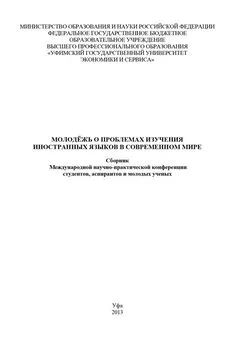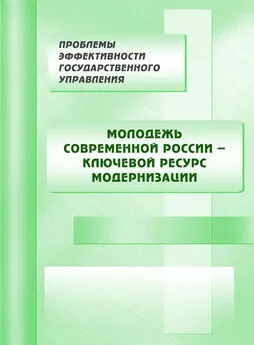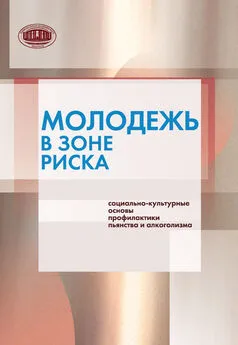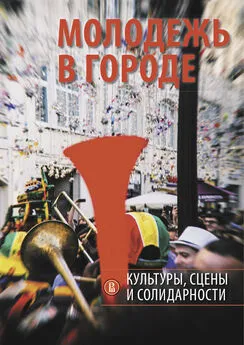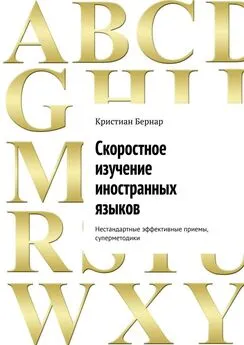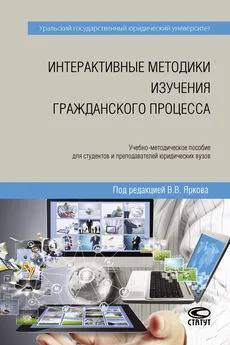Коллектив авторов - Молодежь о проблемах изучения иностранных языков в современном мире
- Название:Молодежь о проблемах изучения иностранных языков в современном мире
- Автор:
- Жанр:
- Издательство:Литагент БИБКОМ
- Год:2013
- Город:Уфа
- ISBN:978-5-88469-630-3
- Рейтинг:
- Избранное:Добавить в избранное
-
Отзывы:
-
Ваша оценка:
Коллектив авторов - Молодежь о проблемах изучения иностранных языков в современном мире краткое содержание
Молодежь о проблемах изучения иностранных языков в современном мире - читать онлайн бесплатно ознакомительный отрывок
Интервал:
Закладка:
In similar compositions the female figure, sometimes the tree image most often was central. Sometimes the central place was taken by a symbolical rhombus. Such replacements aren't casual and logical as also a female figure (an image of the goddess of all real), and the tree (a life tree), and a rhombus (an earth arable land symbol) are symbols of fertility, the life source.
On Bashkir kharaus it is possible to meet as strongly stylized anthropomorphous figure in the composition center, and the tree image.
Composition of patterns Bashkir kharaus has many options. It can't be considered as simple loan of an ornamental plot. Connection in one composition of horses, a tree, the person, birds doesn't contradict national representations. "In the Bashkir folklore, – researcher M. M. Sagitov notes, – in critical situations the horse becomes a sacred patrimonial tree of the poplar which mighty branches lift the hero on inaccessible height and that rescue from the enemy persecutor. The motive of transformation of a horse in a patrimonial tree is characteristic for the TurkicMongolian epos" [6-9].
Data on spiritual culture the Bashkir testify that preconditions for preservation of the representations which have been originally connected with a horse, were great, and with a deer and a rooster – aren't so considerable. Possibly, in the Bashkir culture the initial symbolics remained in the most general terms: this composition was comprehended as a good wish of fertility and in connection with the "life-deaththe new birth" complex [10].
1. http://www.langust.ru/review/lang_h02.shtml#02_01
2. Kuzeev R. G., Bikbulatov N. V., Shitova S. N. Decorative creativity of the Bashkir people. Ufa: Bashk. branch of Academy of Sciences of the USSR, 1979, 244 p.
3. Dulgarov A.Ya. Semantics of an ornament in the Buryat Buddhist architecture, 2010, the thesis on competition of a scientific degree the candidate culturologists. Ulan-Ude, specialty: Theory and cultural history. 193 pages, as the manuscript.
4. Udmurtskaya pravda, No. 4 (24545), 15.01.2010.
5. Dulgarov A.Ya. Semantics of an ornament in the Buryat Buddhist architecture, 2010, the thesis on competition of a scientific degree the candidate culturologists. Ulan-Ude, specialty: Theory and cultural history. 193 pages, as the manuscript.
6. History and culture of Bashkortostan, studies book. Ufa, UGNTU, 2001, 107 pages.
7. Hisametdinov F.G. history and culture of Bashkortostan. Studies. the settlement for studies, 2nd prod. and additional – Ufa, Gilem, 2003. -280 Art.
8. Culture of the people of Bashkortostan: history and present. Materials region. Науч. Conference. devoted to memory D.Zh.Valeev-s/edition of Z.Ya of Rakhmatullin, Ufa, RIO BGU, 2003, 282 pages.
9. Karimov K.K. Culture of Bashkortostan (1917-2000). Ufa, Gilem, 2006, on: http://www.bibliofond.ru/view.aspx?id=17310#1
10. Nikonorova E.E. Ornament of a calculating embroidery the Bashkir (genesis and development), the thesis Abstract on competition of a scientific degree of the candidate of historical sciences, 07.00. 07 – etiology (ethnography), Ufa, 1998, as the manuscript.
CROSS-CULTURAL COMMUNICATION: NON-VERBIAL BEHAVIOUR
УДК 316.772.2
KHASANOV A.
St Clare’s College, Oxford, UK
Among the most markedly varying dimensions of intercultural communication is nonverbal behavior. Knowledge of a culture conveyed through what a person says represents only a portion of what that person has communicated. Much of nonverbal communication may be broken down into six areas: dress; kinesics, or body language; oculesics, or eye contact; haptics, or touching behavior; proxemics, or the use of body space; and paralanguage. Any one of these areas communicates significant information nonverbally in any given culture.
One of the most apparent differences is the interpretation of dress. The message given by polished shoes, for instance, could easily be lost on a culture in which sandals are the standard footwear. Even when cultures share similar forms of dress, the message inherent in the choice of clothing is not always the same. For instance, the selection of a conservative tie for a formal negotiation might well be shared by several cultures, but exactly what a conservative tie is remains determined by the standards that prevail in that particular culture. Thus, what is a conservative tie in one culture may seem unconservative in another, giving a different message altogether.
Just as importantly, people often bring to a cross-cultural meeting ethnocentric prejudices regarding what they believe to be proper dress. Thus, a European or American may condemn as somehow less than civilized a Saudi or Iranian in traditional garb. Conversely, a Saudi or Iranian may well consider as flagrantly immoral the bare face, arms, and legs of a European or American woman in business attire.
Nonverbal behavioral differences in kinesics may be less obvious than dress differences. How people walk, gesture, bow, stand, or sit are all, to a large part, culturally determined. In many cases, a kinesic sign well understood in one culture is totally unknown in another culture. In Indonesia and in much of the Arab world, for example, it is offensive to show the soles of one's feet to another. In Japan, a relatively elaborate system of bowing is common but has no counterpart in the United States. This entire system of nonverbal communication is therefore generally lost on most U.S. businesspeople.
Some kinesic behavior may carry distinctly different meanings in more than one culture. In such cases, all parties recognize the gesture, but interpret it differently. During George Bush's visit to Australia while he was president, he held up two fingers in a V sign. In both countries the symbol is widely understood, but in the United States the "V" emblem is a sign of good will, victory, and solidarity, while in Australia it carries a lewd, sexual meaning.
Haptics or touching behavior also reflects cultural values. In a generally nonhaptic society such as Japan, touching another person in a business setting even with a handshake is traditionally considered foreign. While those Japanese familiar with U.S. handshaking may adapt to its use, one can expect that such cultural compromise would not easily extend to so haptic a response as a pat on the back.
Oculesics or the use of eye contact also varies significantly depending on the culture involved. In several cultures, for example, it is considered disrespectful to prolong eye contact with those who are older or of higher status. In many cultures, it is considered improper for women to look men in the eye. By contrast, in the United States, studies have shown that eye contact has less to do with age or rank than with a person's credibility or sense of belonging. While fairly steady eye contact in the United States may indicate the listener's interest and attentiveness, intense eye contact may prove disconcerting.
Finally, proxemics or how far apart people stand when speaking or how far apart they sit in meetings carries significant information to people who share the same culture. Personal space is also culturally determined. In the United States, for instance, people tend to feel most comfortable in business settings when speaking at approximately arm's length apart from each other.
In many Latin American, southern European, central African and Middle Eastern cultures, however, a comfortable conversational distance would be much closer.
CREATION OF MYTHS IN MASS MEDIA
УДК 070.16:659.441.8=111
KOVALEVA N., SHAKIRJANOV I.
Ufa State University of Economics and Service (Ufa)
Today mass media are one of the main channels of obtaining information on which views, outlook, population stereotypes depend. Mass media are one of the most influential institutes participating in formation of public consciousness.
Among methods which are used by mass media for influence on consciousness of society it is possible to allocate funds of emotional influence (sensational nature, media violence, an intimidation method), change of the communicative and substantial party of information (distortion, information concealment, manipulation over time and a place of its giving, mystification), linguistic receptions (fragmentation, simplification, repetition, a metaforization, etc.). One of the most effective methods is a mythologization – purposeful introduction in public consciousness of socio-political myths – illusory model of reality. The myth in modern society carries out a number of functions:
• Completion of shortage of knowledge in need of an explanation of the unclear phenomena of political life, also it carries out also other functions:
• Orientation to the values broadcast by the myth,
• Association of individuals in society,
• Consolation function,
• Outlook formation,
• Impact on behavior
All this becomes possible thanks to low educational level of the population, shortage of knowledge about public political system, to trust to mass media and authoritative persons, unwillingness of own judgment of events of reality and received information.
For example, during elections, mass media on advantage to a certain political force create such image, image of the candidate which can make the most positive impact on electorate. Political struggle is won by that who managed to induce the majority of voters via various channels of mass media to make a choice in own favor.
The myth can be developed and the various commercial organizations, seeking to expand the markets, to increase extent of the influence, to win competitive fight or to increase profit.
It should be noted, as mass media in the majority – projects commercial, therefore, they try to maximize the profit. The enterprises of mass media with it are helped by the socio-political myth about pluralism of mass media. Exactly thanks to this myth it is possible to manipulate with mass consciousness; the pluralism means possibility of a choice, but if subjects of a choice aren't present, or illusion of their existence is created, the choice initially has manipulative character. There is also more global purpose of a mythologization of consciousness – to weaken, "to spread out from within" public system of the geopolitical rival on the international scene, differently the purpose is conduct information war successfully.
The structure of the myth and nature of his perception are well studied by public consciousness that allowed creating the whole industry fabricating and introducing myths for the purpose of manipulation with consciousness and behavior of audience in the democratic states.
Thus, creation of myths in mass media has under itself a number of the bases: on the one hand, society in its current state creates opportunity for successful introduction of the myth, on the other hand the myth is one of the most effective methods of conducting fight for economic and political resources therefore it is actively used by the power, the commercial organizations, participants of geopolitical processes.
1. Mass media and modern myths: http://www.moluch.ru/archive/46/5601/
2. Media industry academy" Science" Messenger of electronic and print media" magazine Archive" Release No. 2" A.A. Kashchuk. Television myths – one of ways of manipulation with consciousness of audience: http://www.ipk.ru/index.php?id=1535
NEW WAY OF STUDING SPELLING: HOW TO BECOME THE BEST SPELLER, READER AND WRITER
УДК 81’355:811.111=111
KRAINEVA A., ERUSHENKOV D.*
Ufa State University of Economics and Service (Ufa)
Читать дальшеИнтервал:
Закладка:
